Call +1.800.397.3348 or contact your travel advisor
Expedition Team Directory
Browse our directory of expedition team members who will join us on upcoming expeditions.
By Expertise
- Expedition Leader
- Naturalist
- National Geographic Photography Expert
Expedition staff are subject to change.
Our Team
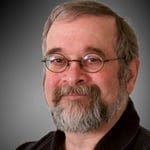
Todd Gipstein
Todd Gipstein has been a photographer, writer, producer and lecturer for more than 50 years. A graduate of Harvard University, he has worked with National Geographic since 1987 and has served as the Society’s Director of Multi-Image and Executive Producer for Multimedia. His award-winning documentaries have dealt with a diverse range of topics, including photography, the environment, history, and travel. Known worldwide for his evocative visual storytelling, Todd has journeyed across the globe—from Cuba and the Galápagos to the South Pacific, the Artic and more—in his pursuit of inspiring images. His photos have been exhibited internationally, displayed frequently in European media festivals and have appeared in countless publications, including National Geographic magazine. An enthusiastic teacher and lecturer, he has presented his documentaries and led photography workshops around the world on behalf of National Geographic. When he is not traveling on his many assignments, Todd enjoys a wide range of activities: he has published 4 historical fiction novels, performed magic and spent a decade restoring a lighthouse near his home in Groton, Connecticut together with his wife, Marcia.
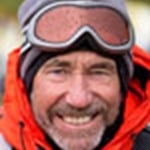
John Pailthorpe
John spent the early years of his life in London, before an inspirational teacher took him to the highlands of Scotland on a school adventure trip. From then on the natural world has been his passion. After teacher training in Bangor, North Wales, John began a thirty-year career in outdoor education centres and schools, teaching and leading children and adults in such pursuits as mountaineering, rock climbing, kayaking, and sailing throughout the U.K. and Europe. During this time John took time out to be part of six polar scientific expeditions, as a field assistant/guide. Two of these were with the British Antarctic Survey; the first a two-month field expedition to the Eklund Islands on the Antarctic Peninsula; the second, eight months as part of a king penguin and elephant seal study on South Georgia. He served as a boat skipper/field guide on a geological expedition to the northwest of Svalbard. More recently, he took part in three expeditions to the Greenland ice cap for the Scott Polar Research Institute of Cambridge, as part of the European Space Agency's “Cryosat” project. John is well aware that his career, and the wonderful experiences it has included, all began with one special teacher. With this in mind, he likes nothing more than to pass on his enthusiasm for nature and all things outdoors, with the intention of promoting an awareness and caring attitude towards the natural environment.

David Brotherson
Growing up near Sydney, Australia, as a student David was long captivated by science, astronomy, and aviation. His passion for the world’s cultural diversity - and it’s elaborate, often entangled history - developed later, and was rooted in a fascination with the civilisations, history, and mythology of the ancient Mediterranean. These interests took shape at the University of Sydney as an archaeology major. As his undergraduate studies neared completion, David started travelling the world, and he would make a transformative trip to Southeast Asia. His weeks abroad were a fairly balanced mix of sandy beaches and medieval ruins but would culminate in a life changing experience standing amidst the enigmatic temple complex of Angkor Wat in Cambodia. The opportunity then arose to work with the university’s Greater Angkor Project, a multi-disciplinary archaeological research program, and a PhD scholarship further cemented this collaboration. David’s dissertation on Angkor’s decline - founded in his expertise in settlement archaeology and GIS - integrated analysis of ceramics, the engineered landscape, environmental proxies, and international trade networks to analyse its urban trajectory, demise, and transformation. David is a long-term resident of Siem Reap, Cambodia, where he has lectured and led tour groups for over a decade. His role with Lindblad-National Geographic began in 2015 with the Mekong River voyage and has since broadened to various Mediterranean programs as expedition historian. David received his PhD from the University of Sydney in 2020. His archaeological research in Cambodia is ongoing, as is his passion for world history, educational tourism, playing guitar and tennis.
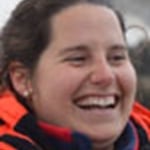
Madalena Patacho
Madalena was born and raised in Portugal. Her childhood was spent in Belem, surrounded by Portuguese maritime history, always dreaming about exploring the oceans. Her love for nature has led her to study biology and later to take a Master’s in management of natural resources, specialized in ecotourism. She has lived on Príncipe Island, off the west coast of Africa, working with local communities on a responsible tourism project. She is inspired by the principles of ecotourism and is always looking for the best ways to contribute and leave a positive footprint everywhere. To travel around the world is her biggest passion, connecting with different cultures, exploring the wilderness and having a taste of local genuine experiences. Following this passion has allowed her to extensively explore Latin America, Asia, Europe, Africa and the Arctic. Her knowledge and enthusiastic storyteller talks have taken her to several universities, lecturing about ecotourism, sustainable tourism and nature conservation. When she is not exploring the world, she dedicates her time to Ocean literacy and environmental education working as a marine educator with a variety of audiences raising awareness on ocean conservation.
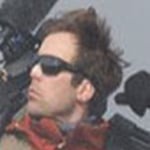
Ross Weinberg
Born in Hollywood with a camera in his hand, Ross is a documentary filmmaker and photographer who is inspired by a good-organic-wholesome-LA-vegan cause and strives to raise awareness wherever he can through his pictures and films. While majoring in Film and Economics at the Boston University College of Communication, he learned the art of documentary filmmaking as an editor and cameraman for the Harvard-Smithsonian Science Media Group. Ross currently lives in Vienna, Austria with his Frau but continues to court adventure. Whenever asked, he finds himself picking up his camera and embarking on assignments that have taken him to the rainforests of remote Guyana, fashion week in NYC, sailing across the Atlantic Ocean and filming with tigers in exotic Missouri. His photography work has been published in Vanity Fair, Los Angeles Times, Vogue and other magazines, and films he has produced have been distributed by Virgil Films and the Samuel Goldwyn Company. These days, he is happiest producing a finished product for a grateful audience in a matter of weeks, not years, and filming amazing wildlife…as long as its not before 6:30am.
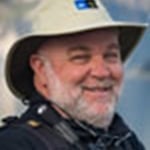
Doug Gould
Travel and adventure were an integral part of Doug’s upbringing in a small town on the south shore of Long Island, New York. Growing up on the Great South Bay, his family claims Doug learned to sail before he learned to walk. Whether it was camping, sailing, birding, traveling across country or spending most of fifth grade living in Europe, Doug’s formative years left him with a love of wildlife, the outdoors, and a desire to keep moving. After receiving a B.A. in dramatic arts from the University of California, Santa Barbara, Doug mixed a short career in the film and TV industry with two summers working for the Catalina Island Harbor Patrol, which led to his owning the third largest private marine rescue company in California. Doug sat on the Board of Directors of the Vessel Assist Association of America for three years and has lectured extensively to the marine assistance industry about safety and risk management. In 2003, he volunteered to work for Oceanites as a member of their Antarctic Site Inventory wildlife census team (aka: a penguin counter). This opportunity included numerous trips to the Antarctic Peninsula over the span of three seasons. The Antarctic Site Inventory focused on gathering data about the impact of tourism on Antarctic wildlife, and helped to develop some of the Antarctic Treaty recommendations that govern tourism today. Since 2011, Doug has worked full time as a naturalist, photographer and expedition leader, working primarily in the polar regions. In 2015 he joined Lindblad Expeditions, and continues to share his enthusiasm for travel and adventure as an expedition leader and certified photo instructor.
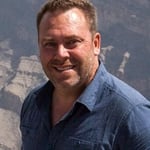
Jason Edwards
Jason Edwards has been at the forefront of natural history photography for three decades. A passion for animals and the environment defines his extensive career. Since embarking on that career at the Royal Melbourne Zoo, Jason has been recognized globally for his contributions to science, the environment, and the arts. Among other accolades, he is a two-time winner of the Eureka Prize for Science Photography, three-time winner of Communication Arts Photography Annual, two-time winner of the ProMax Golden Muse, and winner of the Australian Geographic Society's Pursuit of Excellence Award. Through his commissioned work and as the face of the National Geographic Channel’s Pure Photography, Jason has taken his storytelling to dozens of countries and to every continent. He is an associate fellow of the International League of Conservation Photographers and uses his lens to narrate and highlight issues affecting wildlife, the environment, and indigenous communities. His work has been featured in hundreds of publications including National Geographic magazine, BBC Wildlife, Australian Geographic, Sports Illustrated, Condé Nast Traveler, and The New Yorker. Jason is also an author of science education books, and his imagery has appeared in everything from environmental campaigns to Hollywood blockbusters.
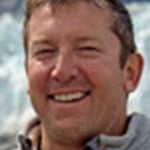
John Mitchell
Raised in the mountains of Crested Butte, Colorado, John has always been a “child of nature,” where the natural world around him was life’s classroom. After graduating from Colorado State University with degrees in Speech Communication and Biology, John joined Lindblad Expeditions. Over the years with Lindblad he tried to learn every aspect of vessel operations while spending his “free time” learning all that he could from the naturalists on board. His time off the boats was spent traveling throughout North, South, and Central America learning more about the areas. John left “for a spell” to pursue a post-graduate degree in marine ecology in Hawaii, fell in love with island life and now calls Maui home. Most recently working as a Coastal Management Specialist for NOAA Pacific Region, he has also been the Program Director for an educational non-profit whose mission was to excite youth about science and all things natural. John has also served as a naturalist, junior high and high school marine science field teacher. He also worked on the Marine Turtle Research Project, and spent five years as the Fish and Habitat Monitoring Coordinator for the State of Hawaii. John is passionate about the need to re-connect our youth to the environment in order to sustain meaningful education.
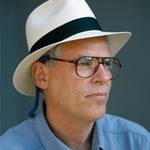
Macduff Everton
Photographer Macduff Everton has shot multiple stories for National Geographic Traveler, and covered diverse regions on projects from Patagonia to Japan to the Scottish Highlands. His other editorial clients include Life, LA Times Magazine, NY Times Magazine, Outside, and Smithsonian. Macduff’s photography focuses on sense of place, whether portraits of individuals or portraits of a landscape. His books include Patagonia La Última Esperanza (University of Texas Press), The Western Horizon (Abrams), The Modern Maya Incidents of Travel and Friendship in Yucatán (University of Texas Press) and Los Mayas Contemporáneos Incidencias de Viaje y Amistad in Yucatán (Universidad Intercultural Maya de Quintana Roo), the latter two he wrote and photographed over a period of decades. His work is in the collections of many public and private institutions, such as the Bibliothèque Nationale in Paris, the British Museum in London, the International Center of Photography in New York, the Museo de Arte Moderno in Mexico City, and the Museum of Modern Art in New York. Macduff has also taught workshops nationally as well as in Mexico and Tuscany.
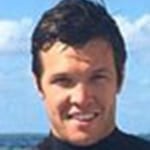
Chris Cook
A self confessed “animal nerd,” Chris falls under many titles: marine biologist, marine interpreter, dive master, science communicator, and naturalist. Chris was lucky enough to grow up on the East Coast of Australia, where there are no shortage of different coastal environments to explore. While growing up, his friends would be surfing while he would be under the waves, snorkel and mask on looking for fish and all the weird and wonderful creatures he couldn’t get enough of. This love of the ocean lead to him completing a Bachelor of Science in 2005. His passion for the ocean and connecting people with its inhabitants landed him in various roles in different zoos and aquariums, but it was the "wild" that was always Chris’s true calling. After working as a whale watching tour guide off the West Coast of Canada and moving back to Australia to work on the Great Barrier Reef, Chris never looked back. Since 2009 Chris’s specialty has been giving presentations on and taking people out to tropical environments, in particular to different parts of the Great Barrier Reef region. In recent years Chris has spent more time living on tropical islands or on ships cruising up and down the reef than on land. Chris’s passion for photography, nature’s creatures, and scuba diving has taken him from diving in the snow in Canada one week to diving in Mexico the next. He has followed his passion to develop his photography and interpretative skills through out Southeast Asia, all along the East Coast of Australia and to the magical Kimberley region off the west coast. The only passions of Chris’s not mentioned are reptiles, birds, insects, dogs, the entire macro world, and of course talking about all of the above over good coffee!
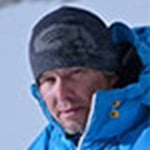
Mike Libecki
Mike Libecki was named a 2013 National Geographic Adventurer of the Year for his commitment to exploring the world’s most remote places. He has completed more than 90 major expeditions in over 100 countries—from Afghanistan to Antarctica, Greenland to Guyana, Siberia to Socotra Island and everywhere in between. His adventures support science, conservation and humanitarian projects, as well as shed light on powerful, emotional stories that inspire us all to take care of our world. Libecki is a producer, director, videographer, photographer, conservationist, humanitarian with his own nonprofit and a leader of cutting-edge science teams. He is also a math and tech nerd at heart, using the latest technologies—virtual reality, 3D imagery and artificial intelligence among others—on his expeditions to share stories of the planet’s magic, power and beauty. Mike has also received numerous grants and awards. He has appeared on PBS, the National Geographic Channel, the History Channel, the Discovery Channel, the Travel Channel and more.
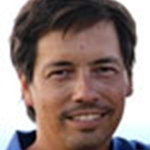
Alex Searle
Born in Chile and raised in Argentina, Alex spent his childhood living in different parts of these countries and getting to know the local cultures. Alex studied Journalism at the University of Chile and did post graduate studies at UBC in Vancouver, Canada. Working as a Chilean TV producer for years, Alex worked in the news department doing research, and produced a successful late night show as well as a wildlife show that did stories all over America. Since he was a kid his life’s dream was to visit Easter Island, or Rapa Nui in the local language. He visited during his university years, together with his wife, Terangi, who was born on this unique Pacific island. Alex has worked for years with Lindblad Expeditions in Easter Island, and also works as a guide all along Chile. An avid diver and photographer, he has contributed his photos to books about Easter Island. His love for the cultural past and present of Rapa Nui, Polynesia, and other areas of South America, as well as his passion for wildlife and nature, make him a passionate guide. He is excited to share his understanding and knowledge with fellow travelers.
Showing 12 of 385
